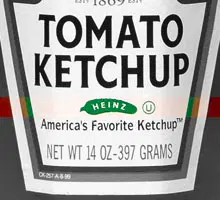 The Hebrew word kāshēr , which can be translated as “proper,” came into Yiddish as kosher . The concept is accepted by the Royal Spanish Academy ( RAE ) and is used in our language to describe food that is obtained and prepared according to the standards of Judaism .
The Hebrew word kāshēr , which can be translated as “proper,” came into Yiddish as kosher . The concept is accepted by the Royal Spanish Academy ( RAE ) and is used in our language to describe food that is obtained and prepared according to the standards of Judaism .
Kosher, therefore, is appropriate according to the ideas of this religion . If kosher is correct, what is not kosher is inappropriate or inappropriate.
The Jews, in this framework, eat according to what is established in the Bible . Non-kosher foods include pork, rabbit, and shellfish, for example. On the other hand, kosher species of poultry and meat have to be slaughtered in a specific way.
Another kosher precept indicates that dairy products and meats cannot be prepared or consumed together. Millions of people around the world pay attention to these rules when eating.
It is important to keep in mind that the entire food preparation process must be kosher . French fries, for example, are no longer kosher if they are fried in a vegetable oil that has been pasteurized on the same equipment used to produce tallow .
The Orthodox Union (UO) Kosher is one of the best-known kosher certification agencies. It has some 6,000 plants in eighty countries dedicated to controlling more than 400,000 products. The consumer, upon finding the UO seal, knows that the food in question is kosher since it respects the criteria of Judaism.
One of the concepts related to kosher is shechitá , a ritual slaughter carried out by the shochet (the slaughterer) and which consists of cutting the animal's throat with a deep and uniform cut, using a specially sharpened knife to ensure that it does not possess no defect on your blade. It is worth mentioning that many times it is the rabbi himself who fulfills the role of shochet.
 The goal of shechita is to minimize the animal's suffering. All of this is part of the kosher rules, since animals cannot be slaughtered in any way to be converted into food. In fact, natural death, due to disease or some deformity in its organs, completely rules out an animal for this purpose. It is important to highlight that these are prohibitions and not recommendations.
The goal of shechita is to minimize the animal's suffering. All of this is part of the kosher rules, since animals cannot be slaughtered in any way to be converted into food. In fact, natural death, due to disease or some deformity in its organs, completely rules out an animal for this purpose. It is important to highlight that these are prohibitions and not recommendations.
Jews cannot consume blood either, which is why the Torah explicitly states that animals must be bled completely through the use of salt before being used in cooking. This rule does not cover the treatment that fish must receive, although it does include foods beyond meat, since a blood stain makes any edible product prohibited.
In addition to blood, there are other parts of the animal body that are not considered kosher. For example, fats found in the areas of the sciatic nerve, liver and vital organs. In fact, in certain communities it is only possible to consume the front quarters to ensure that none of the previous parts have been left in the final product .
This covers the technical issues behind the slaughter of the animals and the production of the products. But communication with buyers is lacking in the context of the food industry. Any product that has been inspected by a rabbi and classified as kosher must have certain symbols that identify it. A circle with the letter U inside is one of them, and it is accepted in almost everyone.
